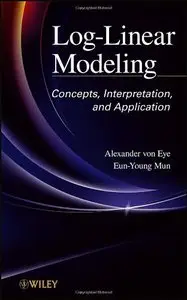Alexander von Eye, Eun-Young Mun, "Log-Linear Modeling: Concepts, Interpretation, and Application"
2013 | ISBN-10: 1118146409 | 472 pages | PDF | 6,3 MB
2013 | ISBN-10: 1118146409 | 472 pages | PDF | 6,3 MB
An easily accessible introduction to log-linear modeling for non-statisticians
Highlighting advances that have lent to the topic's distinct, coherent methodology over the past decade, Log-Linear Modeling: Concepts, Interpretation, and Application provides an essential, introductory treatment of the subject, featuring many new and advanced log-linear methods, models, and applications.
The book begins with basic coverage of categorical data, and goes on to describe the basics of hierarchical log-linear models as well as decomposing effects in cross-classifications and goodness-of-fit tests. Additional topics include:
The generalized linear model (GLM) along with popular methods of coding such as effect coding and dummy coding
Parameter interpretation and how to ensure that the parameters reflect the hypotheses being studied
Symmetry, rater agreement, homogeneity of association, logistic regression, and reduced designs models
Throughout the book, real-world data illustrate the application of models and understanding of the related results. In addition, each chapter utilizes R, SYSTAT®, and ℓEM software, providing readers with an understanding of these programs in the context of hierarchical log-linear modeling.
Log-Linear Modeling is an excellent book for courses on categorical data analysis at the upper-undergraduate and graduate levels. It also serves as an excellent reference for applied researchers in virtually any area of study, from medicine and statistics to the social sciences, who analyze empirical data in their everyday work.



